A searching look at terror of the gulag
Reflections on terror, imagined and real, are making a visit to Boston this month, during an intentional confluence of events that explore the Soviet-era gulag.
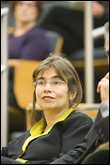
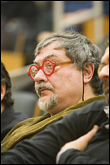
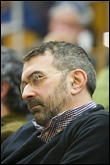

Through Jan. 14, the curious viewer can take in three related exhibits on the onetime vast network of brutal work camps, where in the Stalin era alone 5 million Soviets were imprisoned or internally exiled.
And the curious listener can take in a four-day scholarly conference at Harvard on the history and legacy of the Soviet gulag – the largest ever international event of its kind.
• For gulag-related events
• A glimpse at the history of gulag
Through December, other events continue the examination of the gulag, including plays, film screenings, teacher conferences, and additional lectures.
The scholarly conference, at Harvard’s Davis Center for Russian and Eurasian Studies, is free of charge and open to the public. Researchers from eight countries will present nearly 30 papers in a series of panels – one of them in Russian only – today (Nov. 2) through Sunday (Nov. 5).
The intense four-day event will showcase “the history and the legacy of the gulag, across many disciplines,” said historian and conference organizer Steven A. Barnes ’93. He conceived of the gathering of scholars while doing postdoctoral work at the Davis Center.
The conference starts the same day as the official opening of “GULAG: Soviet Forced Labor Camps and the Struggle for Freedom,” a traveling museum of labor camp artifacts, case studies, photographs, video footage, and documents. It’s on display at Boston University’s (BU) 808 Gallery on Commonwealth Avenue.
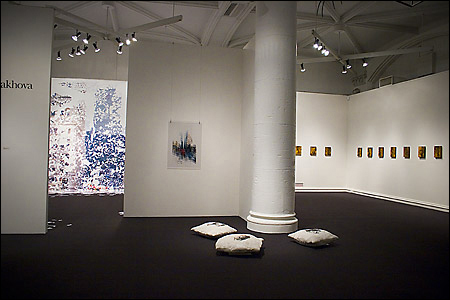
The exhibit, which opened this summer on Ellis Island, is a collaboration of the U.S. National Park Service, the Gulag Museum of Perm, Russia, the International Memorial Society, and Amnesty International USA. It will travel to four other U.S. cities through mid-2008.
The historical exhibit will give Americans “some sense of the magnitude of the horror of the gulag – and the almost minimal things people could do to be imprisoned” in the Stalin era, said Barnes, a gulag specialist and assistant professor of history at George Mason University. “The holocaust was not the only human rights tragedy of this period.”
One of the exhibit’s artifacts is a voting card, on which a man wrote “comedy.” For that, in 1949, he was sentenced to eight years in a gulag.
The exhibit also opens a window onto the Soviet famine of 1932-1933, a time of 7 million starvation deaths. During that period, a woman was arrested for stealing a few pounds of rye from a harvested field. Her sentence: 10 years in a gulag. (The Soviet gulag was a hierarchy of camps, including separate ones for children, the disabled, women with children, and the wives of traitors.)
“GULAG” is a miniature of the exhibit in Perm, the site of a former gulag – “one way a country tries to deal with the legacy of horror,” said Barnes. It will open American eyes to a long-ago reign of terror that Russians are still grappling with.
How many gulags there were is still a matter of scholarly dispute – compounded by the fact that camps could be subdivided into hundreds of subcamps, some of them spread out over hundreds of kilometers.
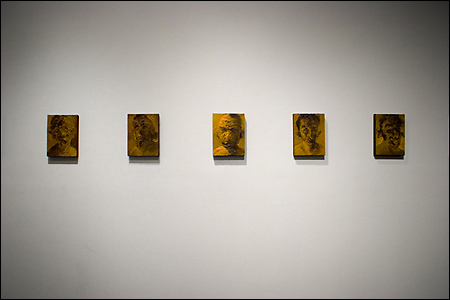
Scholars estimate that at least 1.5 million perished in the camps – “the smallest number we can really say,” said Barnes. But in 1937 and 1938, in an accelerating campaign of mass arrests, at least 800,000 Soviets were deliberately executed, some of them in gulags. Members of the Communist Party were hardly exempt, said Barnes. Of all the members attending the Party Congress in 1934, as many as three-quarters were dead by 1938.
Perm-36, the camp featured in the traveling exhibit, is one of the last physical artifacts of the gulag era – saved from a KGB wrecking ball by historical activists, just before the fall of the Soviet Union.
It was an agricultural work camp in Russia’s remote Ural Mountains, converted in the 1960s to a closely guarded lockup for political prisoners.
Adjacent to “GULAG” at the 808 Gallery is “Faces of Resistance,” an exhibit of 48 photographs of dissenters in the human rights movement in the 1970s. Their peaceful resistance, inspired by physicist-turned-activist Andrei Sakharov, helped eventually topple the Soviet regime, and expose the abuses of the gulag.
The pictures give viewers a sense of the diversity of dissent – a loose gathering of religious believers, nationalists, ethnic groups eager to get back to their native lands, and a cross-section of Soviet society: farmers, professionals, soldiers, and intelligentsia. The pictures “put a human face on it,” said Tatiana Yankelevich, director of the Sakharov Program on Human Rights at Harvard, which sponsored the photo exhibit.
Across the street, at the Boston University Art Gallery, the gulag leaves the realm of the literal and enters the land of the imagination. “Territories of Terror” is an exhibit of works by seven Russian artists.
The gulag is more than fact – it represents a complex of “unconfronted memories,” said “Territories” curator Svetlana Boym, the Curt Hugo Reisinger Professor of Slavic Languages and Literatures at Harvard and a professor of comparative literature.
She called the show of paintings, sculpture, and installation pieces “one of the first attempts to interpret the gulag through contemporary art.”

Four of the artists, born during or just after World War II, had Stalinist childhoods. Faraway gulags were a collective, and unspoken, nightmare. The reality of the camps clashed with the fairy tale of a workers’ utopia, promulgated in Soviet songs, poems, and public art.
Three of the artists, born after Stalin’s death in 1953, grew up during the disenchantment of the Khrushchev thaw. The gulag (officially abolished as a system in 1960) had lost its fatal reality. But it survived as a potent metaphor of shame, absurdity, and alienation.
In the 1950s, millions of prisoners streamed back into Russian society from gulag camps. Their stories were little told under continuing Soviet repression, but for artists, the imagery simmered.
There have been a lot of historical and artistic representations of the holocaust, but hardly any of the gulag, said Boym, a writer and cultural theorist who grew up in the former Soviet Union. (Her paternal grandmother, an ethnic Jew arrested in 1949 for being “cosmopolitan,” survived six years in a gulag.)
Before “Territories,” none of the seven artists had dealt directly with the image of the gulag, said Boym. But all had grown up in the shadow of the work camps, which lurked as a naked fear or as a cultural humiliation.
“We knew exactly what we could talk about, and what we couldn’t,” said one of the artists, Irina Nakhova, who was born in 1955. She escaped repression by becoming an artist, she said. In 1983, in the gloom of the Brezhnev era, Nakhova made one room of her Moscow apartment into a work of art, the first of her dreamlike “public interiors” like the one on display at BU.
To escape the reality of the Soviet era, “I was traveling in my own apartment,” explained Nakhova, “to distant, idealistic lands.”
Boym said the seven artists had to confront the mythological duality of the gulag. It was both a hell and a paradise, she said: the locus of forced labor, but first intended as “a colony of ideal Socialist labor.”
At the exhibit, an emblem of that duality hangs above viewers: Leonid Sokov’s “Flying Cage,” a framework of forged iron and skeletal wings. It’s a whimsy of flight while simultaneously admitting the impossibility of flight. Boym called it a “poetic dysfunctional machine (like) those Russian fairy tales that remain elusive and never come true.”
Grisha Bruskin, one of the artists and a Muscovite born in 1945, remembers the fairy tale realm of the Stalin era, with its massive statuary and grand propagandistic art. “I thought in childhood that Stalin was a god,” he said, remembering a glimpse of the man himself in Red Square.
But at home, “it was dangerous to tell the truth,” said Bruskin, whose parents were quiet dissenters. “Always they told us: Don’t say anything beyond the apartment.”
In the BU exhibit, Bruskin deals with the duality of his childhood with a series of painted bronze figurines. They’re heroic, archetypal Soviet figures (soldier, prisoner) – but fragmented, as if from an archaeological dig.
“My idea was to represent Soviet mythology,” he said. “I was part of it, the gulag was part of it.”
To work through what Boym called the gulag’s “unfinished business of memory,” she gave each artist a “territory” in the gallery.
“To give us space for reflection,” said Boym.




